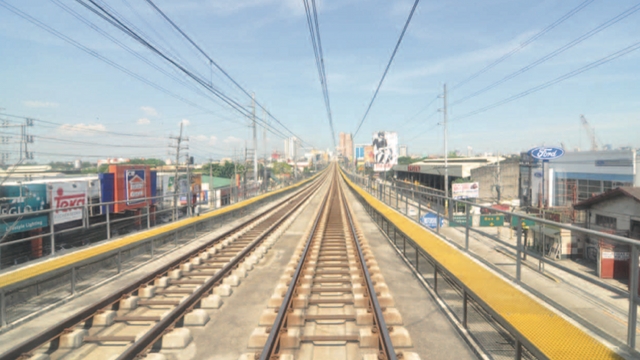SUMMARY
This is AI generated summarization, which may have errors. For context, always refer to the full article.

MANILA, Philippines – An international consultant on transportation asked: Is Myanmar better at implementing infrastructure plans than the Philippines?
Rene Santiago, president of consultancy firm Bellwether Advisory Inc., noted the stark difference between the two countries in a press conference on Thursday, September 26. Both are pushing for major infrastructure projects to sustain economic growth and generate jobs.
Myanmar was able to bid out 3 airport contracts in just 9 months, he said. The Philippines has set out about a dozen infrastructure project under the Aquino government’s flagship public private partnership (PPP) scheme for infrastructure, but only one has been bid out. All the rest have been terribly delayed.
“Does this mean that officials in Myanmar are more capable than [those in] the Philippines?” he asked.
Delayed rail projects
He focused on the rail projects that could have eased mega Manila’s traffic situation. He estimated that the lost opportunity due to traffic congestion amount to over P5 billion a day.
The Department of Transportation and Communication (DOTC) is set to rebid the P60 billion LRT-1 Cavite rail extension project in the 1st quarter of 2014 after bidding in August was declared a declared a failure.
The deadline for the submission of bids for the single ticketing project of the Metro Rail Transit (MRT) and the LRT has been moved to October.
He added that the increase in the passenger capacity of both the MRT and LRT has yet to take off together with the rehabilitation of the existing tracks of both mass transit systems.
According to him, the DOTC should not only look at the acquisition of additional trains but also should consider beefing up the power supply, reconfigure existing stations, and improve signaling system for both rail systems.
He explained that at least P10 billion is needed to double the passenger capacity of MRT-3 along Edsa that is currently serving close to 600,000 passengers per day or double the capacity of 300,000 per day.
A study by Japan International Cooperation Agency (JICA) stressed the need to put up at least 200 kilometers or railroad and 300 kilometers in road network to address the congested metropolis.
Including the rail network of Philippine National Railway (PNR) from Alabang to Tutuban as well as the MRT and LRT, the Philippines has a rail network of about 80 kilometers.
According to him, 70% of the daily commuters use public transport occupying only 30% of the road network. About 30% of the daily commuters that use private vehicles occupy 70%.
Financing not a concern
He echoed an often repeated sentiment of banks, financing institutions, and foreign investors: the funds for the much needed infrastructure project are readily available.
READ: Private firms on PPP: Nice but slow
He blamed the inability of the state officials, especially those from the DOTC, to execute the projects.
“We are just fortunate to have brilliant leaders at the DOTC today. You must be so brilliant to mess it all up,” he said sarcastically.
He revealed that he submitted proposals to extend the LRT lines 1 and 2 as early as 1998 but all his proposals were ignored by the DOTC.
Santiago conducted feasibility studies for various transport projects in Vietnam and Laos, as well as served multilateral lending institutions including the Asian Development Bank, JICA, AusAid, among others. – Rappler.com
Add a comment
How does this make you feel?
There are no comments yet. Add your comment to start the conversation.